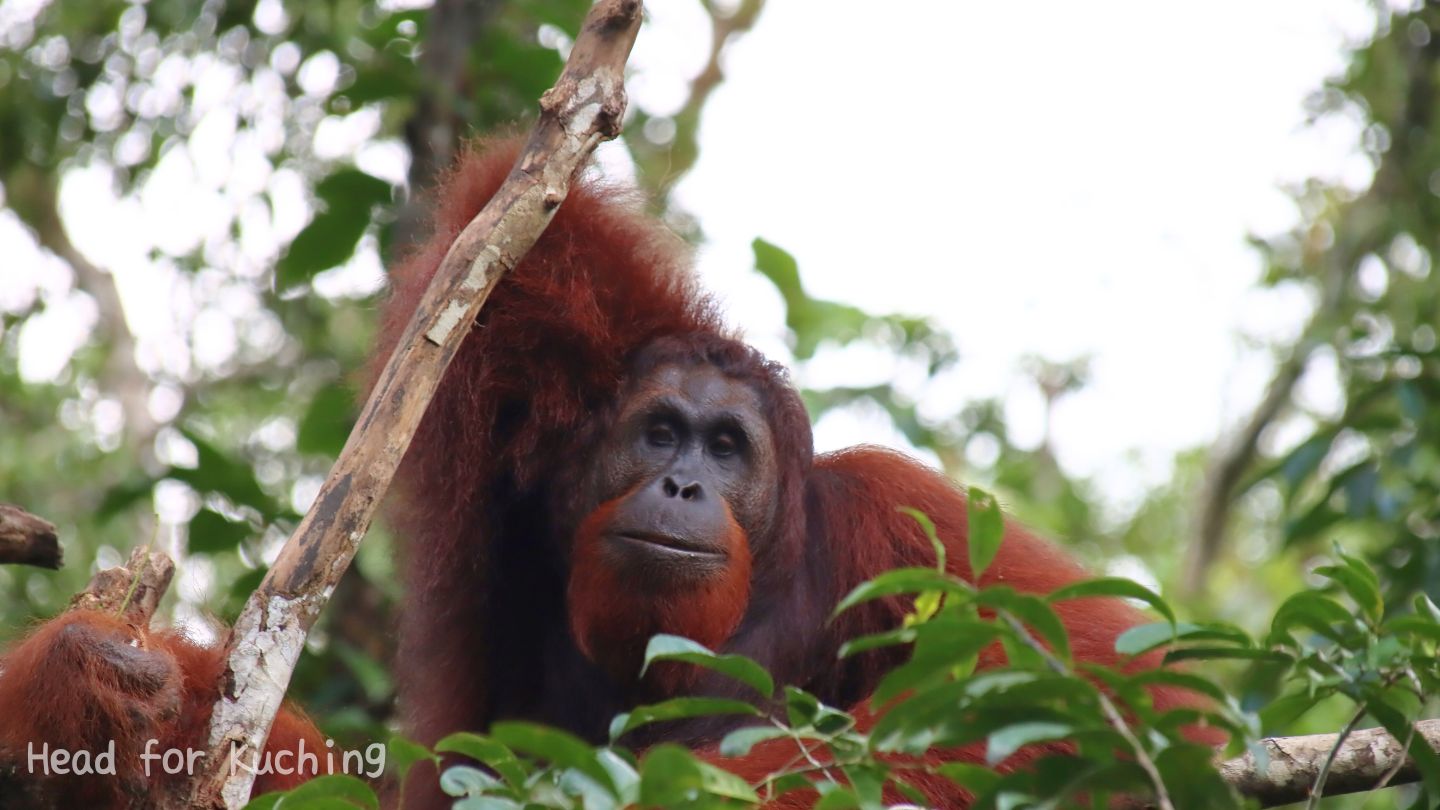
Welcome to the Head for Kuching website! We are a Japanese family who has relocated to Kuching in East Malaysia. This time, we introduce Semenggoh Wildlife Centre, which is one of the best places in Sarawak to observe semi-wild orangutans up close.
Located approximately 24 km from Kuching city, about a 30-minute drive, is the Semenggoh Wildlife Centre.
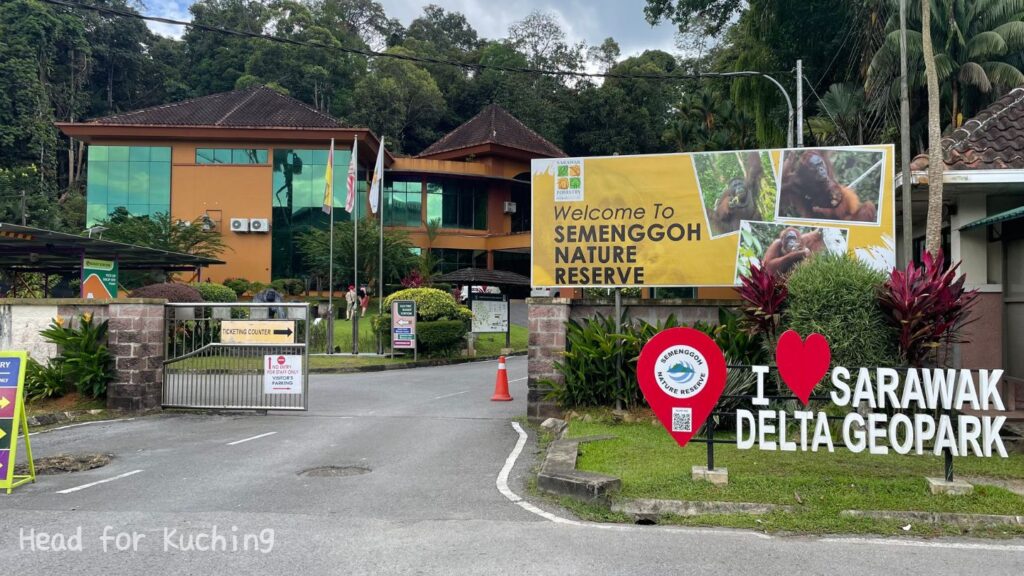
This centre has been involved in the conservation of various rare animals, with notable success in rehabilitating orangutans. Currently, the focus is on studying their ecology and behavior, providing a natural environment where offspring of rehabilitated individuals can live freely.
The centre is open to the public during the twice-daily feeding sessions.
Opening Hours:
8:00AM – 10:00AM (Morning Session from 9:00AM – 10:00AM)
2:00PM – 4:00PM (Afternoon Session from 3PM – 4PM)
Admission Fees:
Malaysians: RM5(adults), RM2(children)
Non-Malaysians: RM10(adults), RM5(children)
Tickets can be purchased at the entrance counter.
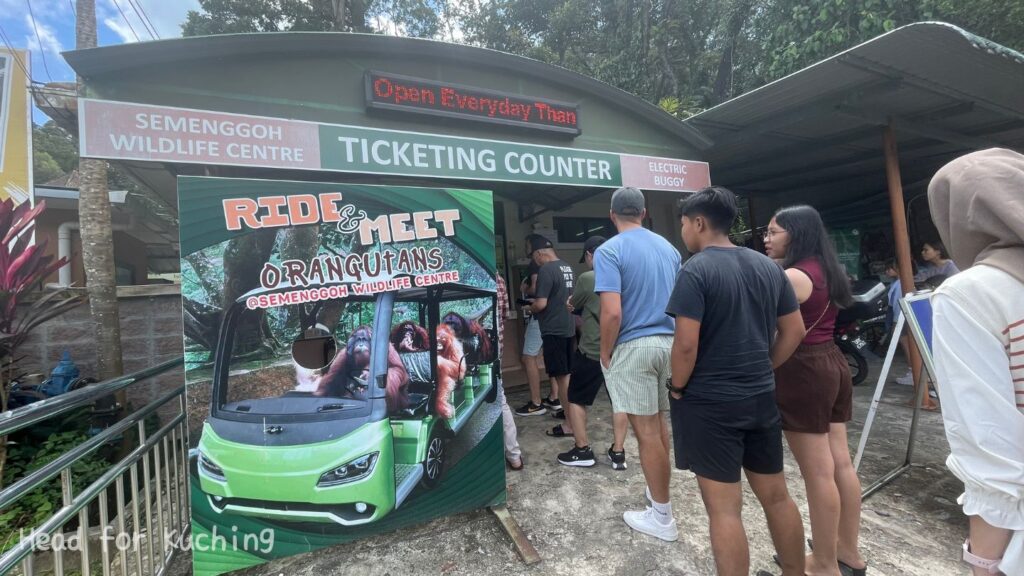
Before purchasing tickets, visitors are required to register their details (name, nationality, passport number, etc.) via the QR code available at the ticket counter or through the official registration site.
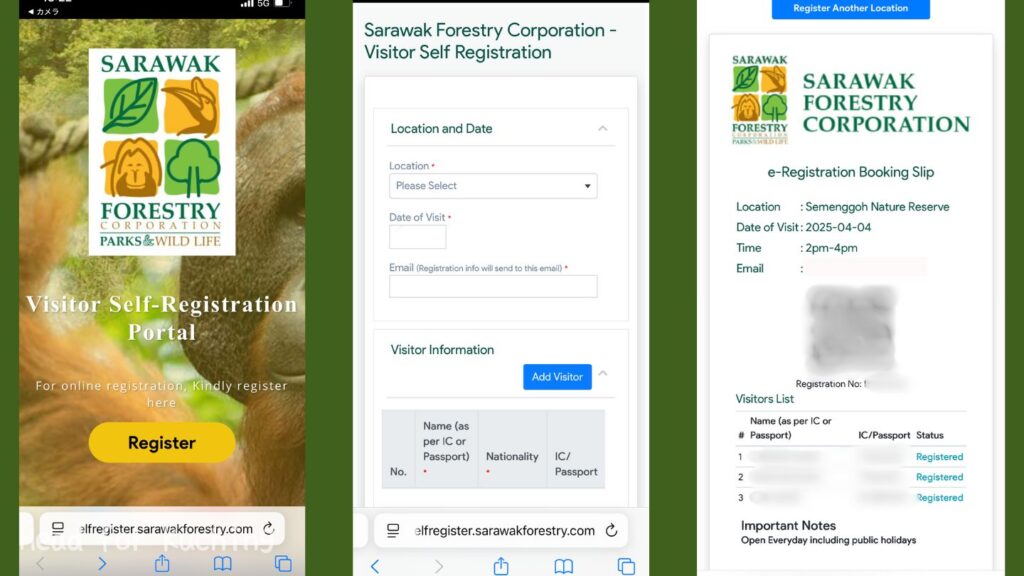
At the ticket counter, present the QR code received upon registration for scanning before making payment.
For those wishing to ride on the e-buggy within the park, an additional fee applies: RM15 per person for a round trip, RM12 for a one-way trip.

Visitors can also choose to walk to the feeding area. It will take about 20 minutes. Along the way, you’ll be surrounded by lush greenery—tall trees swaying gently in the breeze and the sounds of birds echoing through the forest—offering a peaceful immersion in nature.

Anticipation Builds…

Visitors gather around the clearing, eagerly awaiting the orangutans—but none are in sight yet.

A short explanation begins, informing us that about 20 orangutans, including three babies, inhabit the forest. We are advised to remain quiet during observation and warned of the possibility of being targeted by orangutan excretions if standing under certain trees. Eating, drinking, and pointing umbrellas are also discouraged.

A caretaker appears with a large bucket filled with bananas—a favorite treat of the orangutans—and places them on a platform. Another staff member calls out into the forest, receiving faint responses from deep within.
Rustling in the Trees…
After a while, the distant calls grow closer, and the treetops begin to rustle.
Then—there they are!

Two orangutans emerge from the trees, skillfully descending using ropes, grabbing coconuts and bananas with their hands and feet, and even holding food in their mouths—demonstrating remarkable dexterity.

They settle in the trees to enjoy their meal, cracking open coconuts against the branches to drink the juice—a display of both strength and grace.
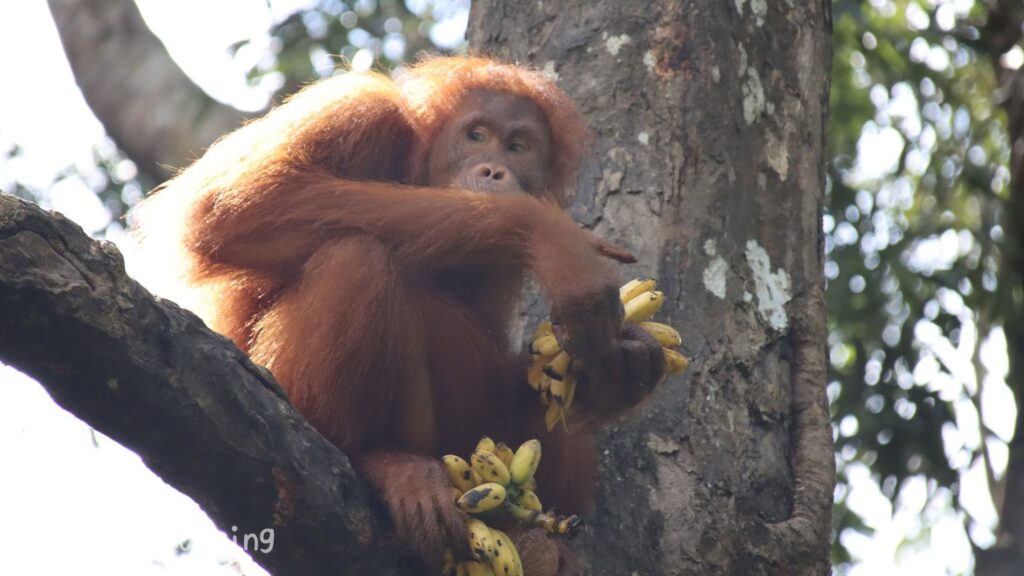

After about 20 minutes of observation, the orangutans quietly return to the forest. Humans simply watch, without interference, witnessing the natural rhythm and majesty of these “lords of the forest.”
The Boss Appears!

As we are heading back, someone inform us of a larger orangutan’s arrival. Visitors quickly and quietly move to observe.
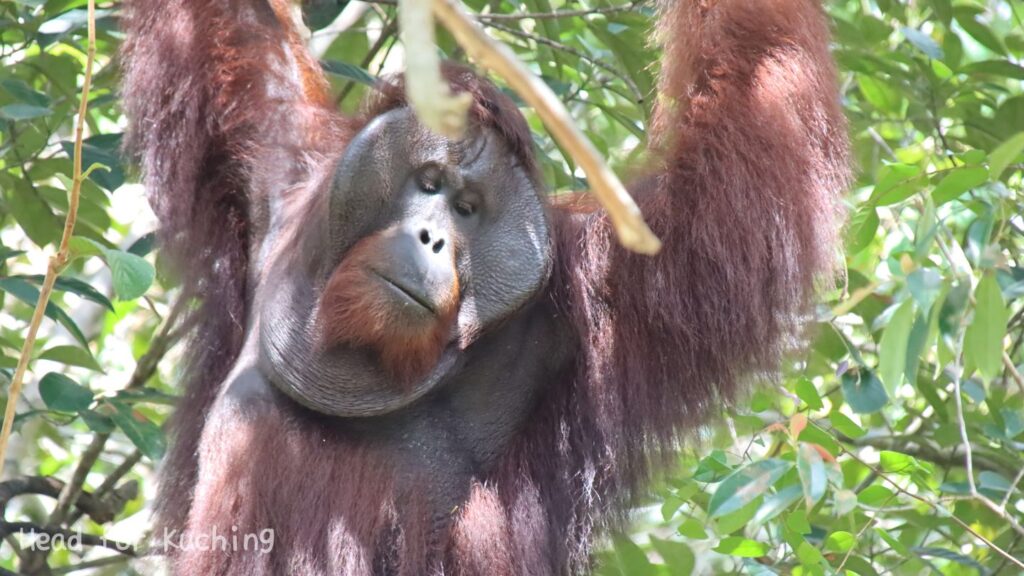
A massive orangutan appears, exhibiting the prominent cheek pads characteristic of mature males. His imposing presence commands silence and awe among the onlookers.
Relaxing at the Café
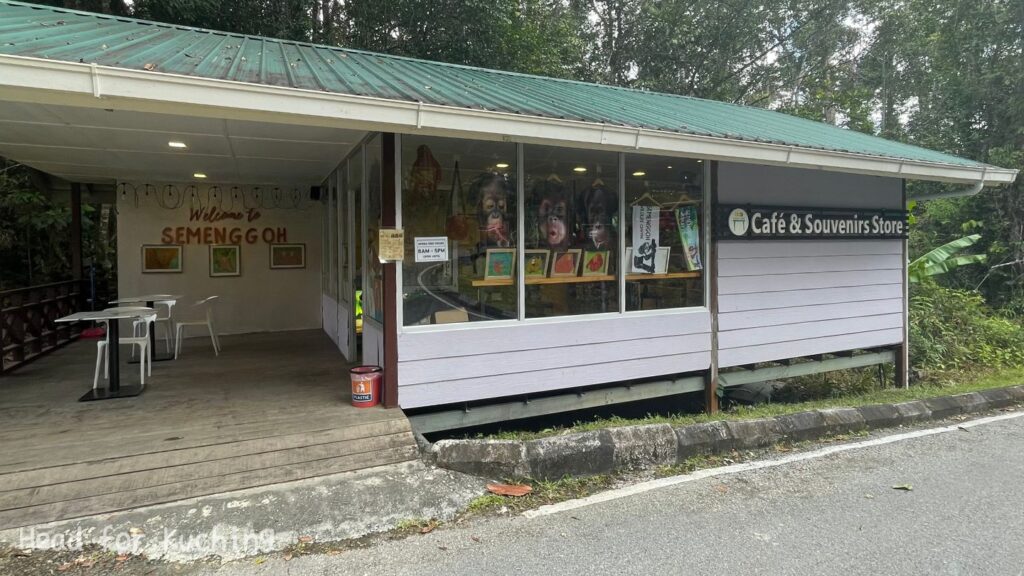
While eating and drinking are prohibited near the orangutans, there is a small café nearby offering aromatic coffee and refreshing ice cream—perfect for a hot day.
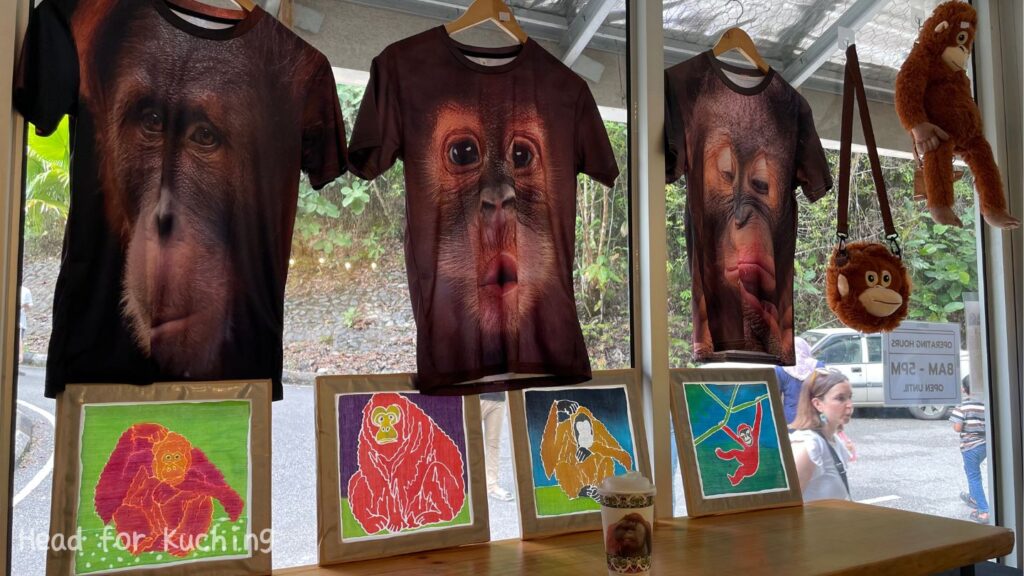
The souvenir shop is filled with orangutan-themed items like plush toys and keychains.
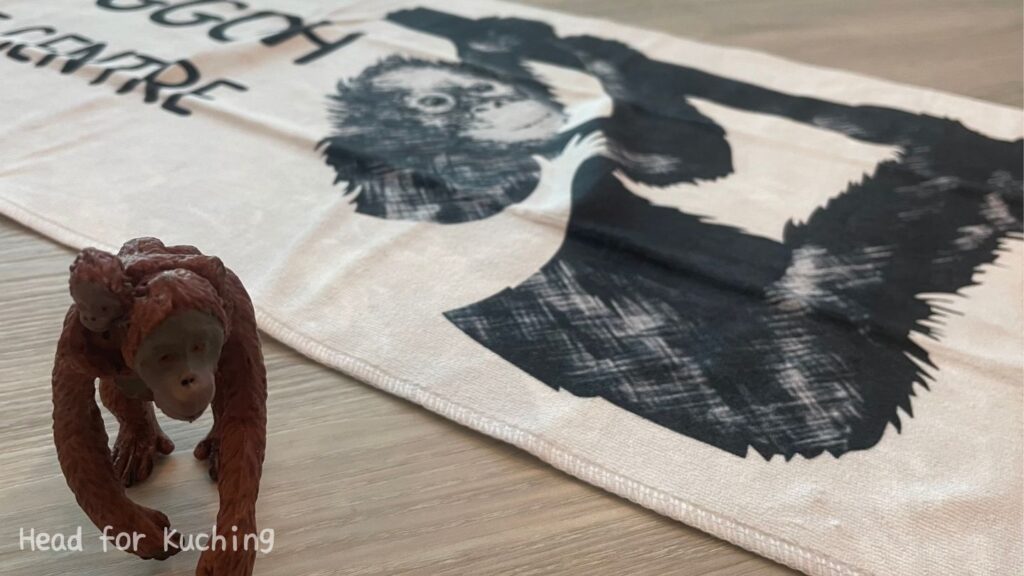
Final Thoughts
If you’re visiting Kuching, don’t miss the chance to meet the “people of the forest.” It’s a rare experience that leaves you with not just great photos, but a deeper appreciation for nature.
